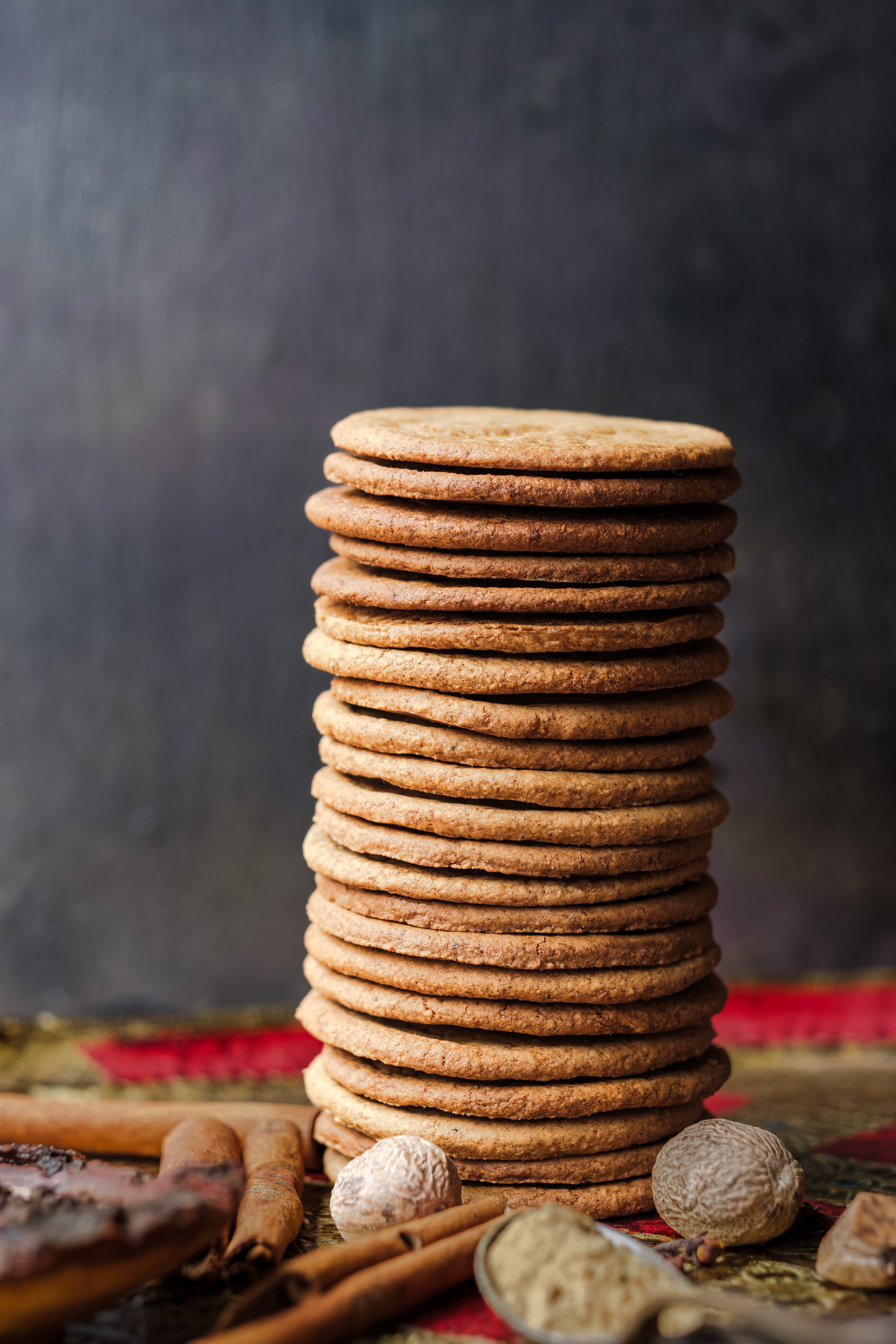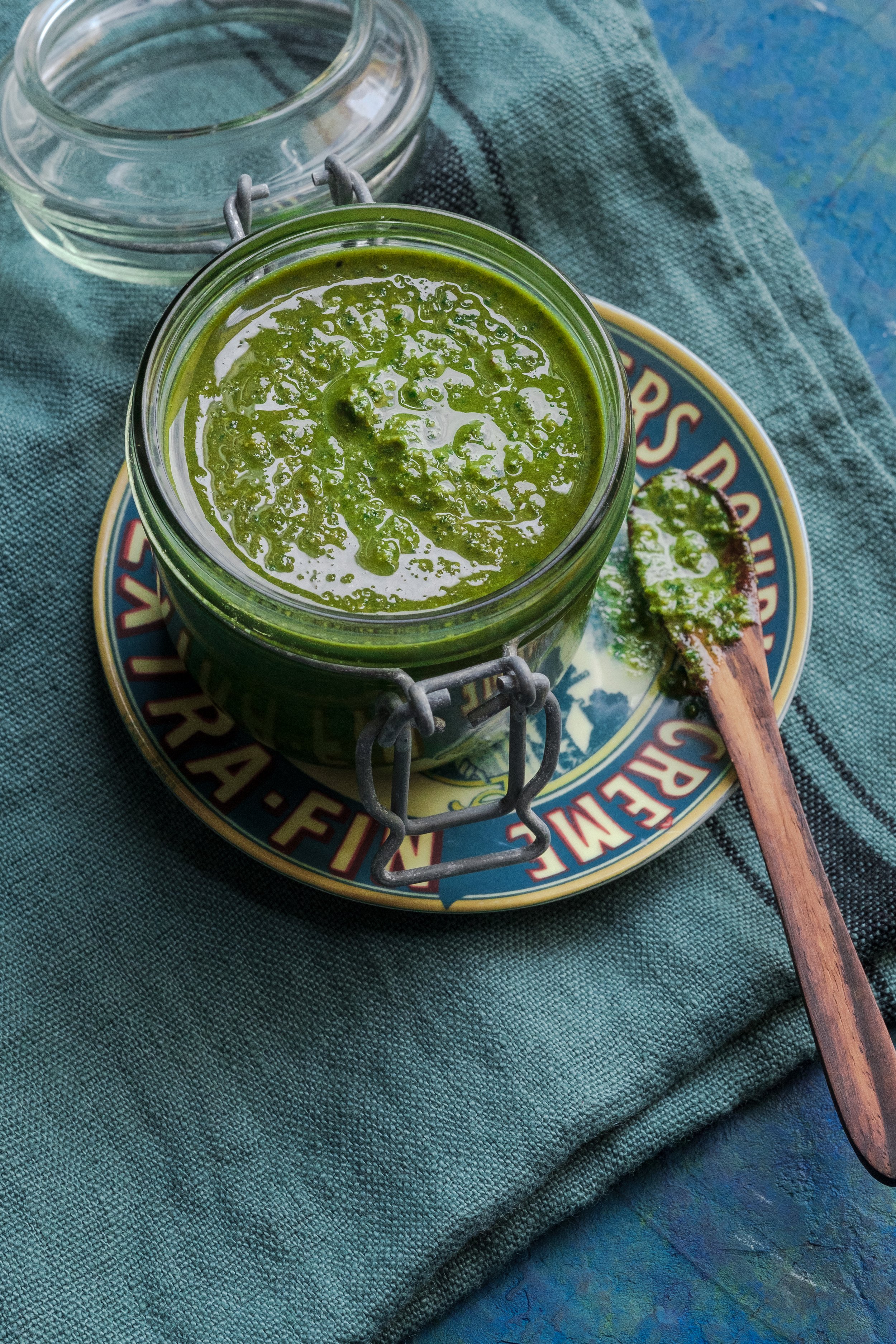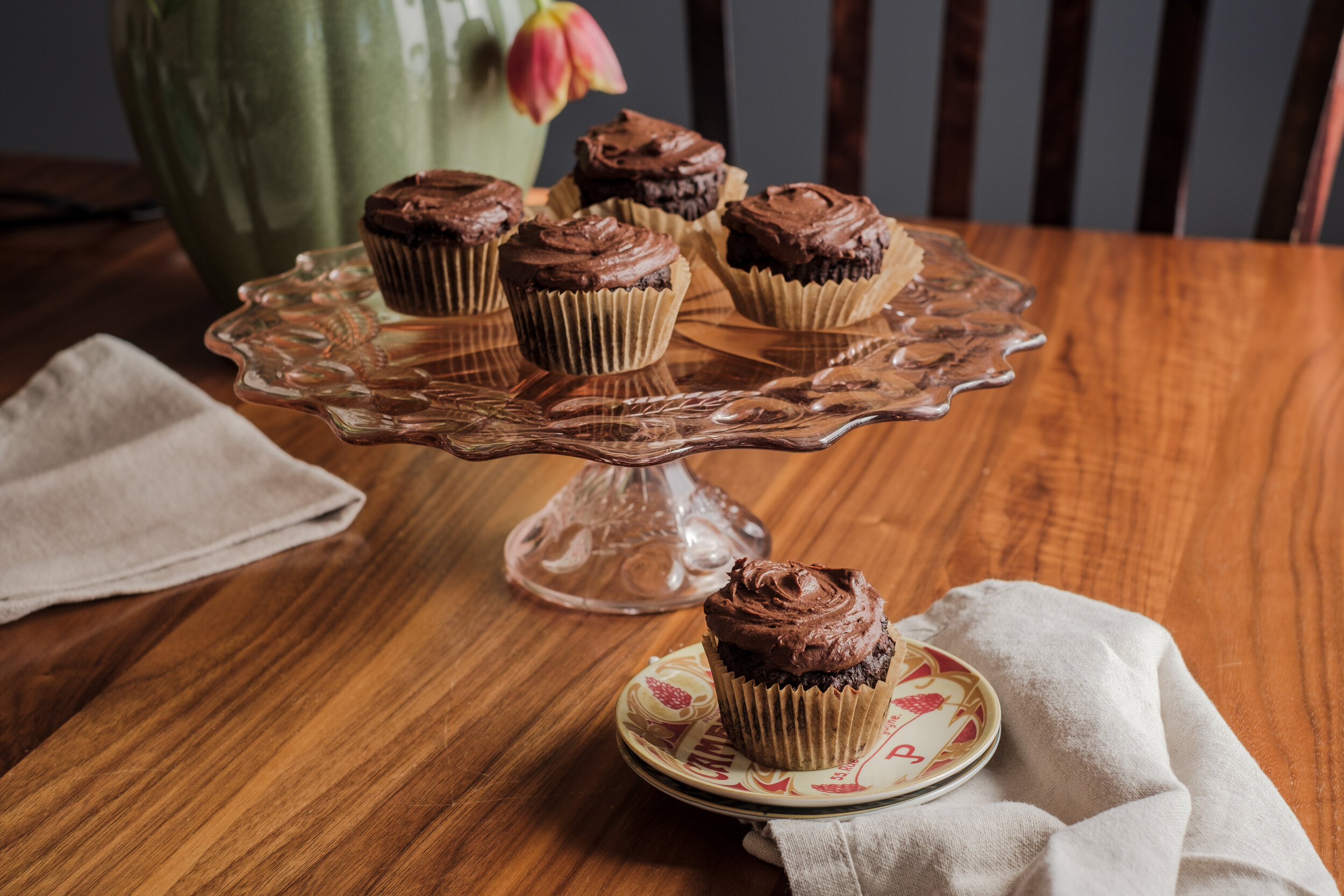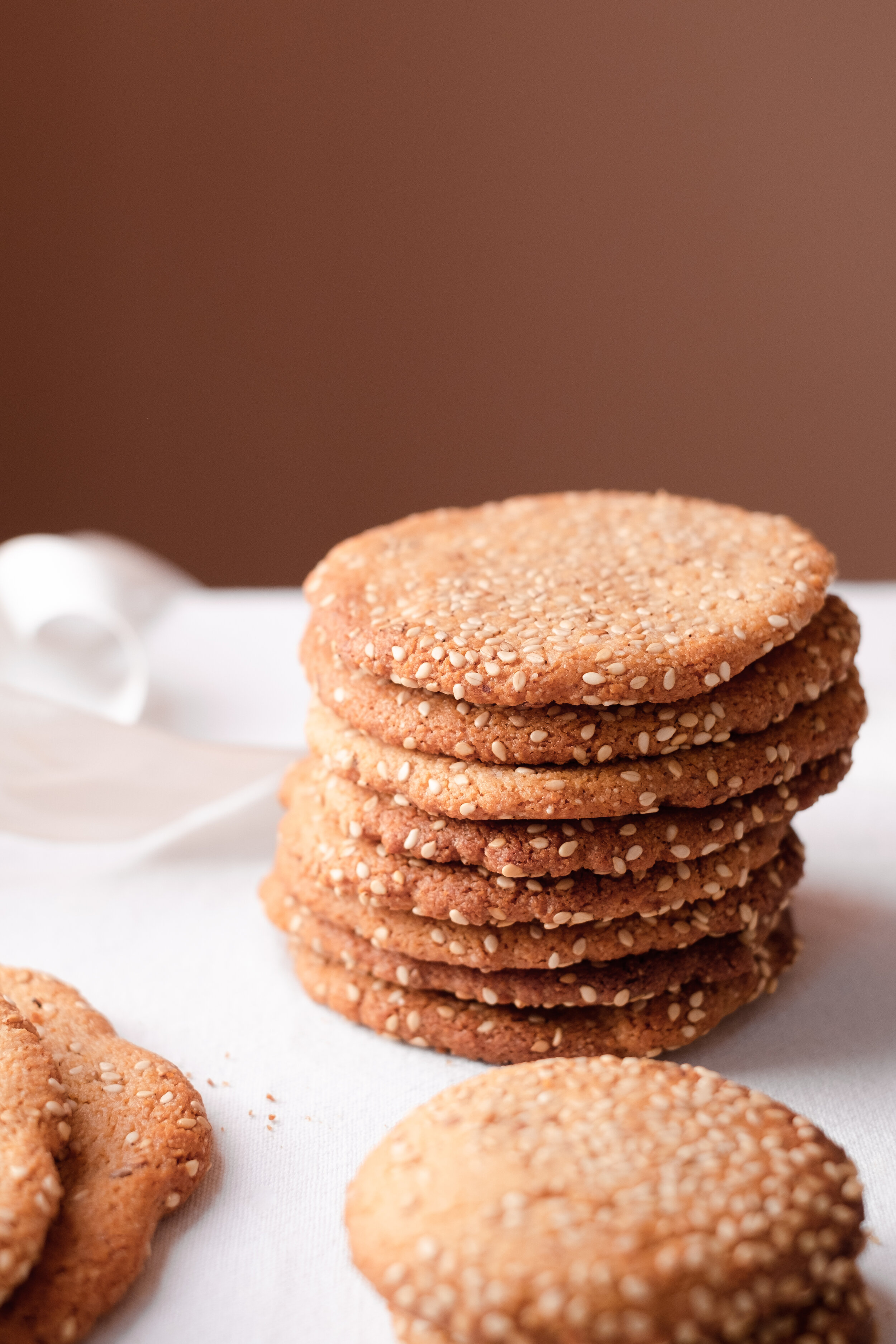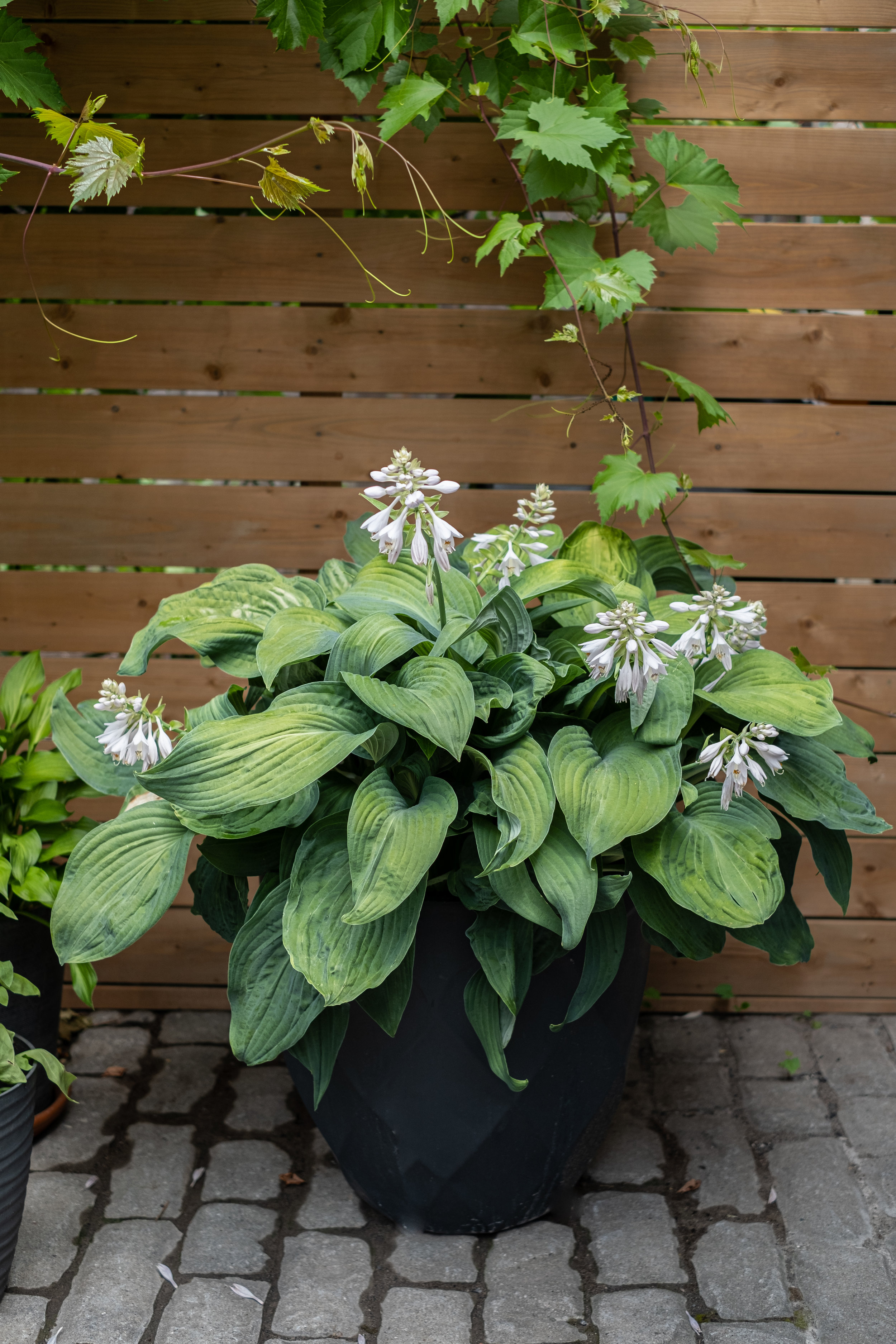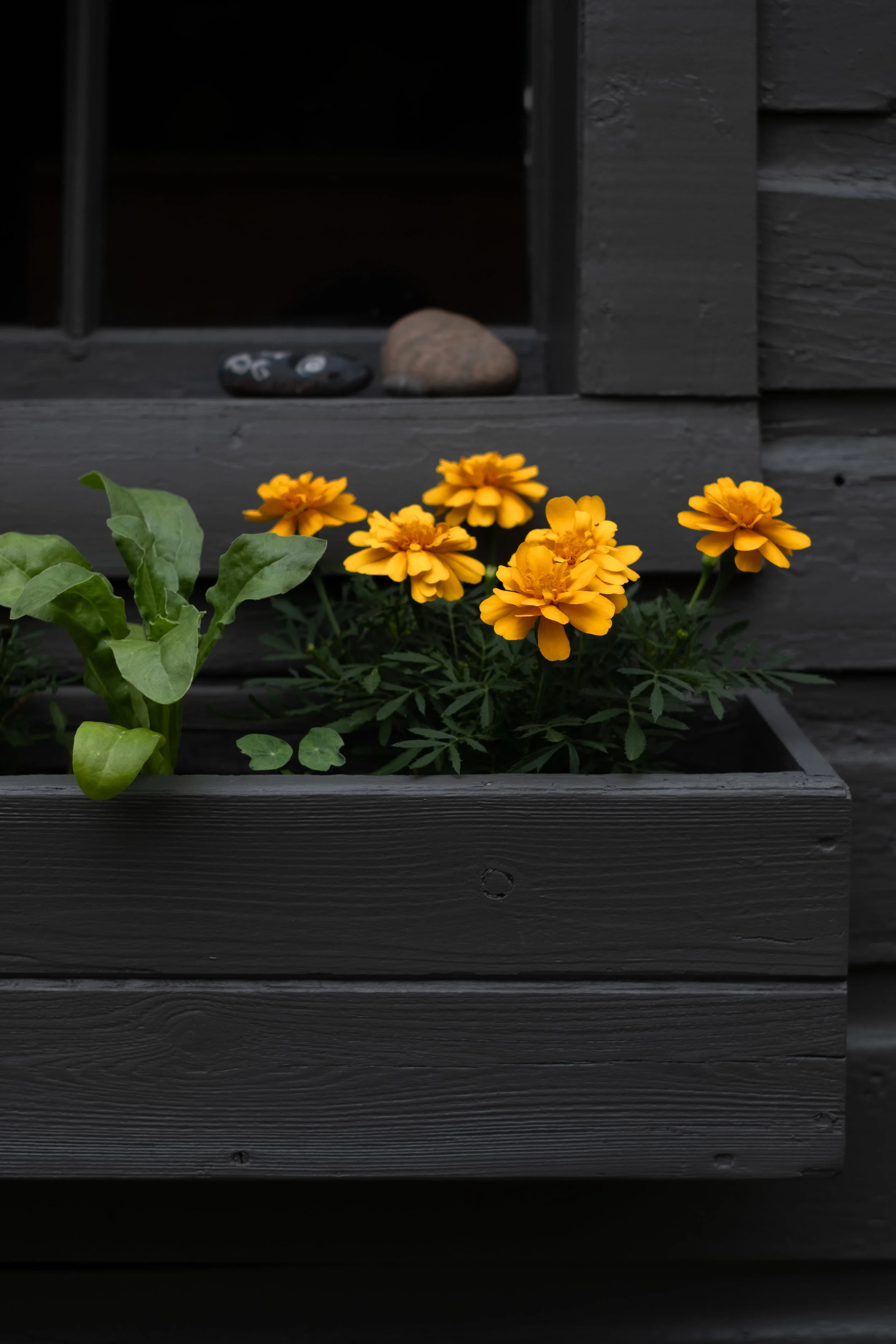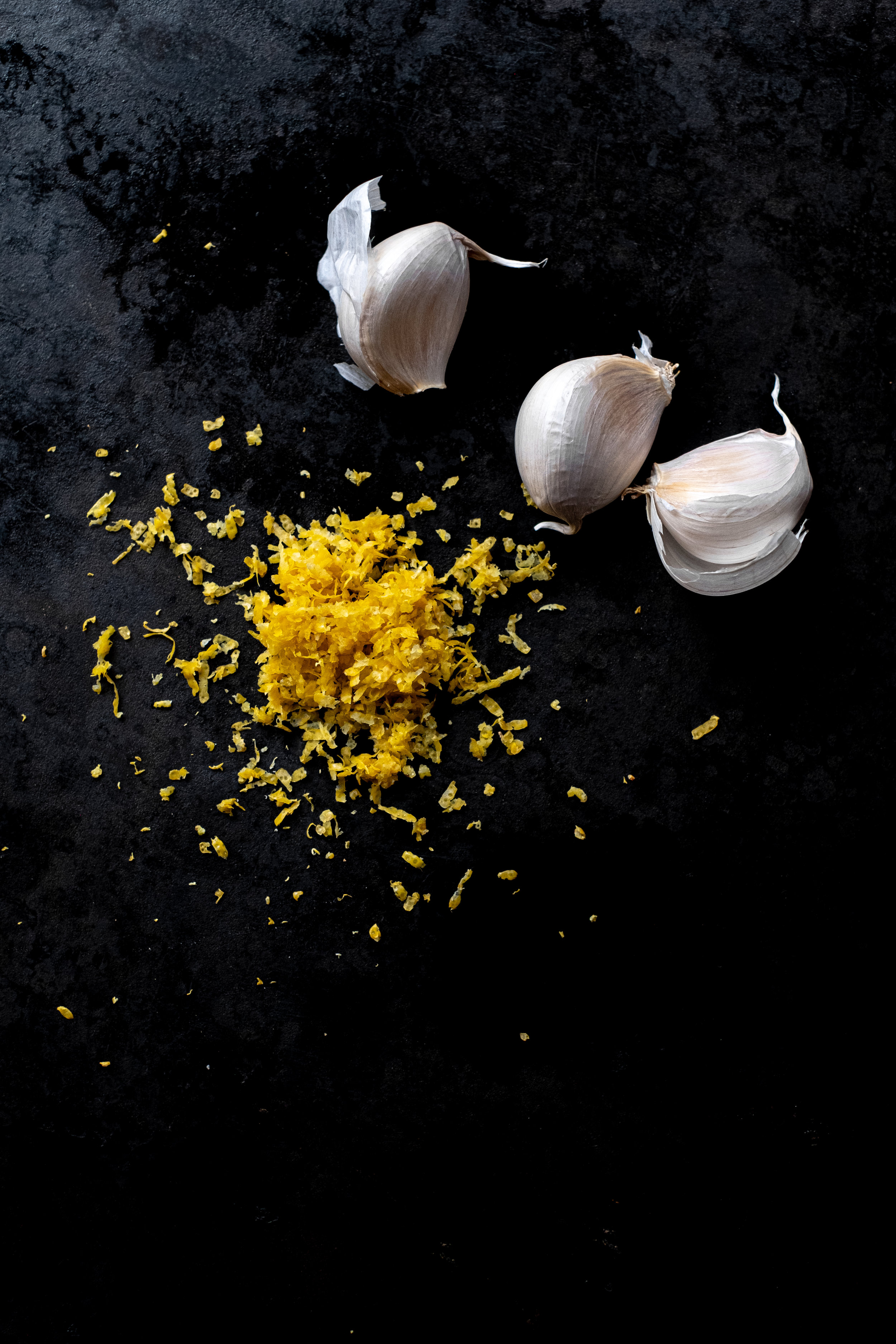Gingersnaps appeared commercially in the mid 1800s but we can trace this cookie’s roots to medieval times. It’s believed to have been invented by monks in 13th century Germany.
Typically, gingersnaps are flavoured with molasses and spices like cinnamon, clove, ginger and nutmeg. They’re prepared in varying textures and thicknesses too.
I love versions that are crisp on the edges and chewy in the middle but this is not that kind of gingersnap. This one lives up to the name! It’s got an amazing light crispness and crunch.
This is a strongly flavoured cookie. I increase the amount of spice from that used in the original recipe and I include ground cloves and freshly ground black pepper. I use ground nutmeg in a pinch but I much prefer whole nutmeg, grated with a microplane. If you're out of ground cloves, like I was, grind a few whole cloves. And why not! Although it’s not necessary, using freshly ground spices rewards you with extra warmth and flavour.
You can even grind rolled oats if you don't have oat flour. For one cup of oat flour add a cup and a bit more of rolled oats to the food processor and blend until it becomes a flour.
The cookie dough comes together beautifully and is easy to roll out. But I had some trouble transferring the unbaked cookies onto the cookie sheet. It was a warm day and the dough had softened and warmed quickly, and it was a challenge to scoop up the cookies without them losing their nice flat round shapes.
Briefly chilling the dough AGAIN - after you roll it out and before you start cutting the shapes - helps a lot, as does using a metal spatula lightly dusted with flour to scoop up the cookies.
Here’s another way to insure your cookies keep their shape. After you press the cookie cutter into the chilled dough and make all the shapes, carefully roll away excess dough from around the cookies and leave them on the parchment, undisturbed. Then slide the parchment onto the cookie sheet.
Of course it doesn't matter if the shapes get wobbly and the cookies aren’t uniform. They will still be delightfully crisp and taste delicious.
Yet it's quite nice to see them neatly stacked, all relatively the same shape and size, especially if you intend to gift them. The brittle structure of these gingersnaps makes them an excellent cookie to package and give away.
Original recipe here.
Gluten free and extra spicy vegan gingersnaps (makes about 30 cookies)
1/4 cup maple syrup
3 Tbsp coconut sugar or brown sugar (or even white sugar, I've tried them all, successfully.)
3 Tbsp melted coconut oil
2 Tbsp molasses
2 tsp ground ginger
2 tsp ground cinnamon
1/4 tsp ground nutmeg
1/4 of ground ground clove
freshly ground black pepper, about 10 turns of the pepper grinder
1/2 tsp baking soda
1/4 tsp sea salt
1 cup oat flour
1/2 cup almond flour
1/4 cup arrowroot flour/starch
Preheat the oven to 350 degrees F (176 C).
Line two large baking sheets with parchment paper.
Begin by mixing together the maple syrup, coconut sugar, melted coconut oil, molasses, ginger, cinnamon, nutmeg, clove, black pepper, baking soda and sea salt until well combined.
Then add in your oat flour, almond flour and arrowroot starch and mix with a stiff spoon until everything is blended well.
Form the dough into a flattened disc, wrap in parchment and refrigerate for 30 minutes.
Remove from the fridge and allow the dough to rest for a minute then place in the centre of a sheet of parchment paper lightly dusted with some arrowroot starch. Lightly dust the top of the dough with more arrowroot starch and place another sheet of parchment paper on top and begin to roll the dough into a large circle about 1/16-inch thick. Rolling your dough as thinly as possible results in cookies that are light and crisp. Place the dough in the refrigerator once more to chill for 5 to 10 minutes.
Use a cookie cutter to cut out as many cookies as you can. I used a small drinking glass with an approximate 2 1/2 inch diameter with the rim lightly dusted with arrowroot starch.
Now you have options.
Use a metal spatula lightly dusted with arrowroot starch to transfer the cookie shapes onto your parchment-lined baking sheet about 1 inch apart.
Or do as I did and remove the excess dough from around the cookie shapes and leave them in place on the parchment. Then lift or slide the parchment paper carefully onto the cookie sheet.
Combine remaining dough scraps and repeat until all of the dough is used up.
Bake the cookies for 9 to12 minutes. The longer you bake them the crisper and darker they will be. Cool on the pan for 10 minutes before transferring to a cooling rack.
Store in an airtight container for several days at room temperature, and for even longer in the refrigerator and freezer. You can also freeze the dough and defrost in the refrigerator before rolling out to bake.
